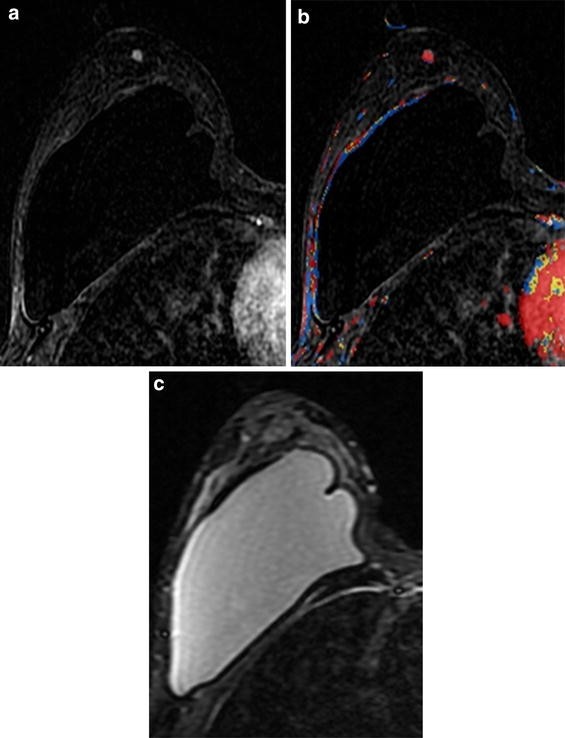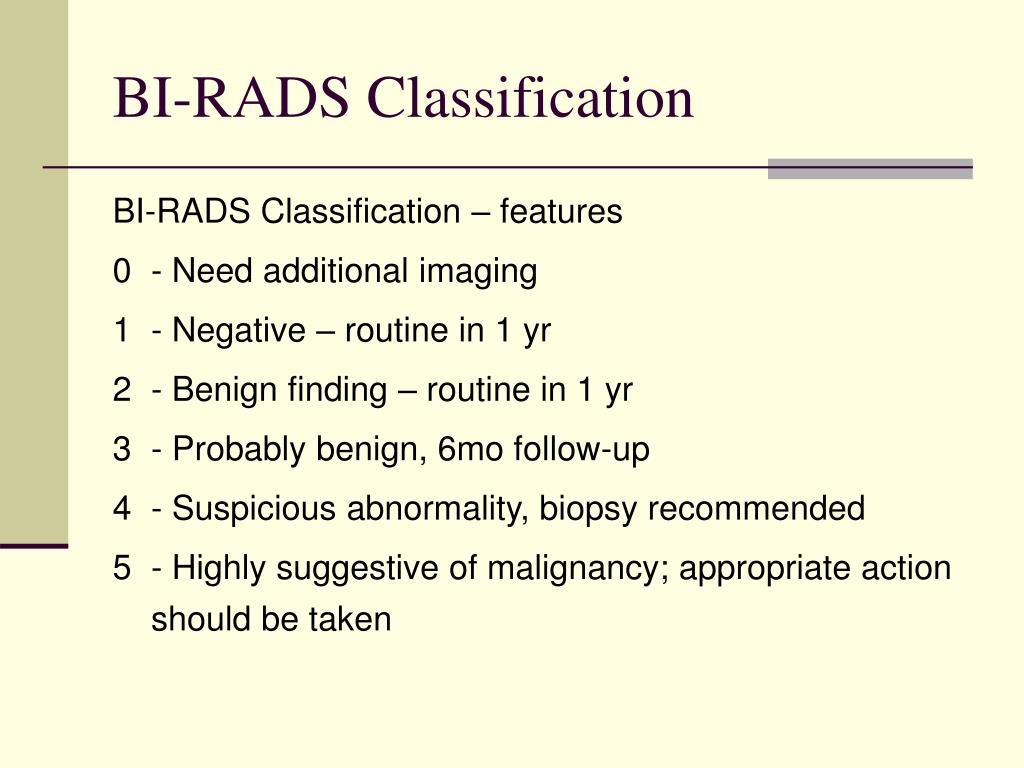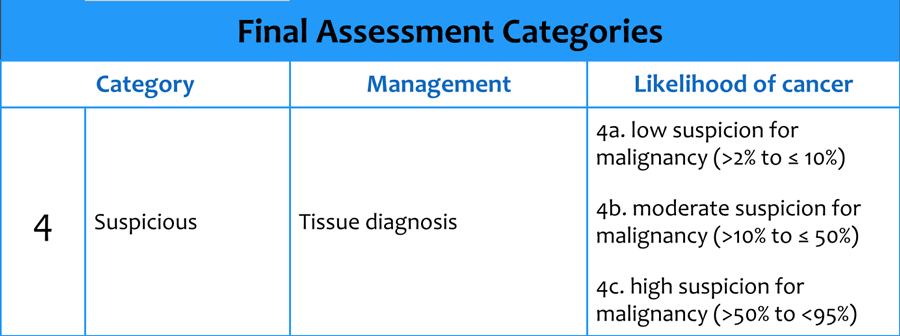
Magnification views (Figure 1A) demonstrated grouped round and amorphous calcifications, with a final assessment of BI-RADS 3, probably benign and short-term follow-up in 6 months recommended. The screening exam was assessed BI-RADS 0, with recommendation for additional evaluation with magnification views. An associated focal asymmetry was noted to be stable for several years.

6 Solitary group of round microcalcificationsĪ screening mammogram performed on an asymptomatic 60-year-old woman demonstrated grouped round and amorphous calcifications in the upper outer quadrant of the left breast.
#Bi rads category 02 benign finding 2a upgrade#
If the finding is assessed as suspicious at follow-up, it is the responsibility of the interpreting radiologist evaluating the patient at follow-up to acknowledge the change and upgrade the BI-RADS to category 4 or 5 with a recommendation for biopsy. They should not grow, develop non-circumscribed margins or suspicious calcifications, or become denser. Findings placed in the BI-RADS 3 category are not expected to change in a suspicious manner. At subsequent follow-up, radiologists should be meticulous in reassessing the finding for suspicious characteristics or changes to avoid dangerous pitfalls in diagnostic interpretation. Understanding what can be appropriately placed into BI-RADS category 3 on initial evaluation and objectively reassessing findings at follow-up are essential. 6 The finding should be followed until at least two years of stability is documented, with the longest acceptable surveillance protocol being three years. Surveillance protocols vary across institutions, but are commonly performed at 6, 12, and 24 months, with some extending out to 36 months. Short-term surveillance should include the modality(ies) which best demonstrated the finding. The management recommendation after a diagnostic mammogram and/or ultrasound is rendered a final BI-RADS 3 assessment is short-term follow-up.

#Bi rads category 02 benign finding 2a skin#
circumscribed, oval, solid mass, parallel to the skin in orientation, hypoechoic to fat with no posterior features or minimal posterior enhancement.There are six sonographic findings which meet criteria for BI-RADS 3 and they are: 6 Supporting evidence ranges from prospective controlled trials to expert opinion. Guidelines also exist for specific, probably-benign sonographic findings, but are less well established in the literature.

focal asymmetry without associated calcifications or architectural distortion.solitary group of round microcalcifications, and,.noncalcified solid mass with round or oval morphology and at least 75% circumscribed margins.6 According to the fifth edition of the ACR BI-RADS ® Atlas, there are three mammographic findings (when seen on a baseline mammogram or mammogram without comparisons) which meet criteria for a BI-RADS 3 assessment and they include: 6-9 What is BI-RADS 3?īI-RADS 3 is a category reserved for specific mammographic findings which have a 0% to ≤ 2% likelihood of malignancy based on robust evidence.

Finally, BI-RADS 3 is not to be used as a category of uncertainty and should not be used as a safety net to place findings that a radiologist is unsure whether to pass as benign or biopsy. BI-RADS 3 is strongly discouraged as a final assessment from a screening mammogram. A BI-RADS 3 category should only be given after a complete diagnostic work-up, which may include additional mammographic views and often sonographic evaluation. 1-5 Understanding when it is appropriate to place a finding into the BI-RADS 3 category is essential for radiologists interpreting diagnostic mammograms and ultrasounds. BI-RADS 3 was created to help reduce the number of false-positive biopsies, while maintaining a high rate of early cancer detection.įive major studies from 1987 to 2001 helped establish that BI-RADS 3 lesions have ≤2% chance of malignancy. The atlas was designed to ensure that breast findings are appropriately analyzed and correctly designated to one of seven BI-RADS categories, each of which implies a specific management recommendation. Breast imaging subspecialists and general radiologists who interpret breast images should adhere to the unique lexicon of the American College of Radiology Breast Imaging Reporting and Data System Atlas (ACR BI-RADS ®).


 0 kommentar(er)
0 kommentar(er)
